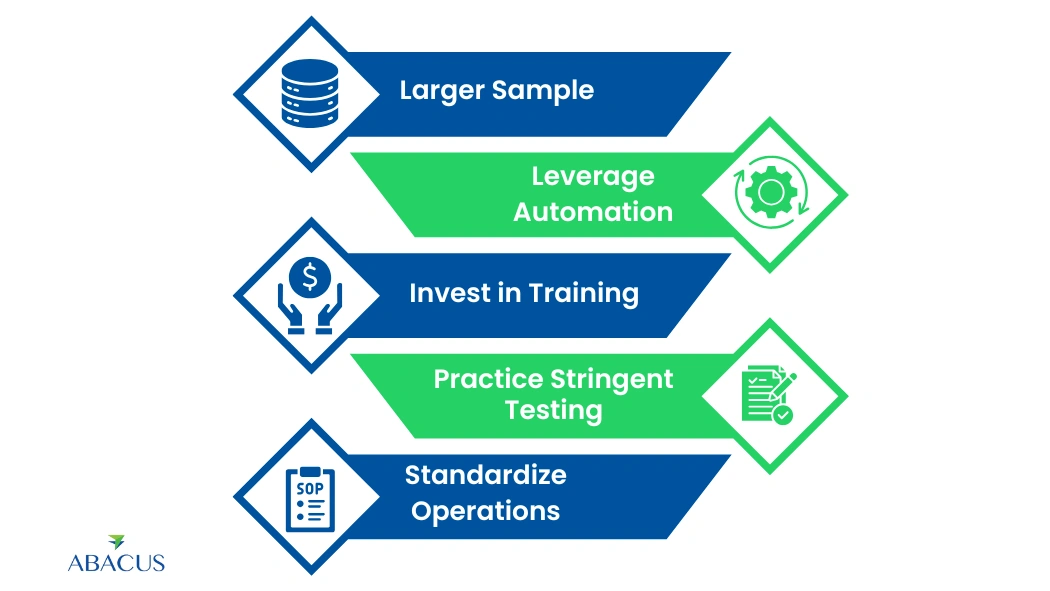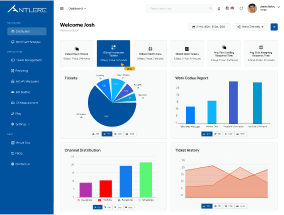The Hidden Impact of High Margin of Error in BPO Services
In the BPO world, accuracy is more than an added value; it’s the essence of trust. From being able to effectively run their customer interactions on-site or downtown or process payments and reports, one wrong decision can lead to consequences you might not ever account for. That’s why the idea of the margin of error is useful.
When you ask people, “what is margin of error?” They typically think of surveys and polls. But in fact, the room for error in BPO services has wide-ranging consequences. High levels of uncertainty can result in financial loss, risk of non-compliance and eroded customer confidence. For sectors such as health, finance and telecom that need to be accurate, the margin for error is very low.
What Is the Margin of Error?
You can think of the margin of error as defining a range that is expected to contain the true value of the result. That is, it quantifies uncertainty in inference.
Let’s say that in an analysis of call center performance, a report states that we have 85% customer satisfaction with a margin of error confidence interval of ±3% (confidence interval +/-). What this means is the true value could be somewhere between 82% and 88%.
- Margin of error definition: It illustrates uncertainty in the data that is reported.
- MOE equation: Margin of Error = Critical Value * Standard Error.
- Point estimate calculator: To calculate a single estimate (best guess) of a population parameter by around that MOE is calculated.
This is why the margin of error equation is so important in quality assurance, because it tells you how accurate BPO reported results are.
How to Calculate the Margin of Error in BPO Context
Correct reporting in BPO depends on statistics. The steps typically involve:
- Point Estimate: Begin with an educated guess of a population parameter (e.g., the percentage satisfied). This is easier with the help of tools like this point estimate calculator.
- Standard Error: Plumb for variance of the estimate. The process becomes easier with standard error calculators or a standard error of the mean calculator.
- Confidence Interval: Choose confidence (typically 95%). It is employed with the margin-of-error formula.

A practical example:
If a survey of 500 BPO users generates an 80% satisfaction rate and the margin of error is ±4%, then it can be said with confidence that the true range falls between 76%–84%.
What this means is that the true percentage isn’t perfect there’s some margin of error built in to all statistics.
Why High Margin of Error Hurts BPO Services
A high margin of error isn’t merely a statistical inconvenience; it has immediate business implications.
Real-World Impacts (Bullet Section)
- Client trust: A bank that outsources customer support won’t accept a data report riddled with errors because regulatory compliance is on the line.
- Financial Risk: A deficient billing rate could lead to millions in revenue loss.
- Customer Experience: If you get your data wrong about how many calls are resolved, you may be understaffing the office – and customers could wait on hold a long time.
- Reputation: A BPO that cannot report accurately may lose its customers to a competitor with more effective oversight.
For example, an election poll calculator that shows a difference of ±5% MOE can effectively turn perceptions upside down. The same can be true of misinterpreted metrics in BPO; executive decisions and strategies can be distorted.
Case in Numbers: Margin of Error in Quality Assurance
Metric | Low MOE (±2%) | High MOE (±8%) |
Customer Satisfaction (Reported) | 90% (CI: 88–92%) | 90% (CI: 82–98%) |
Average Handling Time | 5 min (±0.1 min) | 5 min (±0.5 min) |
Billing Accuracy | 99% (±1%) | 99% (±7%) |
Insight: When MOE is high, reported accuracy is too ambiguous to be actionable. Think about explaining to a customer that their satisfaction could reside somewhere between 82% and 98%. This kind of uncertainty is not permissible in sourcing (IT outsourcing) contracts.
How to Reduce Margin of Error in BPO Operations
One question that all BPO leaders to need to ask: “How do we measure margin of error and how do we take it down? Although no operation can be 100% error-free, when the right processes are put in place, the risk is small.
Proven Practices (Bullet Section)
- Larger Sample: More data = lower variation, thus better accuracy.
- Leverage Automation: The modern AI based QA tools are the ones doing away with human error repetition.
- Invest in Training: Well-trained agents decrease errors in operation.
- Practice Stringent Testing: Always test your IVR call center system, billing systems and reports.
- Standardize Operations: Using similar margin of error formulae on reporting allows comparable results.
For example, high-quality teams often use speech-to-text analytics and call center data to double-check customer interactions. This increases accuracy and maintains the margin-of-error formula in check.

Beyond Statistics: The Human Side of Error
Some formulas, such as how to find the margin of error or calculating margin of error are important, but BPO leaders also have to pay attention to the human dynamic. Overworked agents, ambiguous scripts, and ill-conceived processes are often to blame for these errors.
There are non-statistical controls, such as better work-from-home policies, sophisticated leadership and empowered agents which can help reduce the day-to-day margin of error in an average service delivery environment.
Why Clients Should Pay Attention
As companies look to outsource work to BPO providers, simply inquiring about costs and services won’t cut it. They should ask what margin of error meaning is in the provider’s quality assurance reports.
What does margin of error mean to clients?
It demonstrates how much confidence they can have in reported numbers. For industries with stringent compliance requirements, a slight misstep can result in fines or damage to brand image.
For instance, with healthcare outsourcing if claims processing accuracy fluctuates within a margin of error confidence interval of ±6%, it might mean thousands of claims are either wrongly approved or rejected and this is something that regulators wouldn’t shine away from questioning.
Conclusion: Precision Is the New Competitive Advantage
The concept of margin of error could originate in statistics, but its impact within BPO operations is very real. A high MOE creates distrust loads risk and reduces the core point business outsourced in the first place: efficiency and reliability.
Forward-thinking BPO suppliers are already looking to invest more in stricter QA frameworks, sophisticated analytics and automation so they can be as competitive with their error rates as humanly possible bedbugs play an important role in the functioning of a healthy ecosystem. For its clients, associating with outsourcing firms that consider accuracy as a core value not an end-of-the-line checkbox can be the life-or-death difference.
In a world where customer expectations are higher than ever and compliance requirements are less forgiving, reducing the error margin is not a choice – it’s the essence of sustainable outsourcing success.

Author









